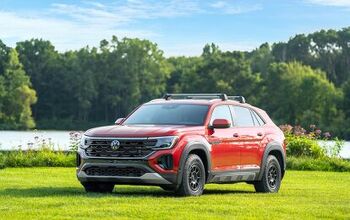Ford of Europe Sells 55 Mpg Focus
Chevy has its Cobalt XFE, VW its special Polo Bluemotion edition. And now Ford has joined the party, at least in Europe with a special edition Focus called ECOnetic. Manufacturers are getting this down to a bit of a formula and that's a very good thing. Better bumpers, more flush wheel covers, lower resistance tires, and in this case "lower viscosity transmission fluid" all contribute to the mileage and CO2 improvements. The benefit? Fifty-five American miles per gallon on the combined cycle (though their testing methods are considerably more forgiving than American fuel economy standards) and low enough CO2 emissions that the car will be exempt from London's congestion charge. The secret, of course, is that Ford's Focus 1.6 diesel already qualifies for exemption, but don't tell the advertising guys. Still, this is unfortunate news that perhaps the market can adapt to more intense fuel and emissions standards, albeit with limited run special edition versions of existing cars. And no, for the last time, we can't have the Euro Focus in America for a few more years because Ford hates each and every one of us.


































Comments
Join the conversation
My 88 528e came shod with 195 70 14 wheels. Most of my fellow E 28-ers have opted for wider, lower profile tires. The bigger wider tires help grip better on smooth, dry roads. On uneven roads, they deliver a harsher ride. Pot holes often bend the wheels. So much so that most used wheels require straightening to run true. The heavier weight punishes the bushings in the suspension. They were engineered for the smaller, cushier 14s. Unless you're 'Bahn storming, the 14s are perfectly fine , if not better in real world conditions.
Today's tires are a significant part of the overall performance that you get from a modern car. I have put modern performance rubber on some pretty basic older cars. The difference is like night and day. Even my station car gets premium performace tires now. There is an increase in impact harshness and noise, but the trade off is so worth it. The killer is the short tread life. Really good tires are dead at 30K miles or less. This comes as a shock to those who are used to 60k out of tires on their Buick, yet their new Avalon is ready for a fresh set of Michelins at 28K. There's a real shock at the tire store, too. Premium tires have premium prices. This has led to many a car to be shod with "compromise" rubber. So, if you are purchasing a used car, don't just look at how much tread is left, but check as to what was installed. Put so called "passenger" tires on a car that came with "ultra high performance" rubber and you will be amazed at how the car's ride/handling traits have deteriorated. A good source of tire information can be had at the Tire Rack.
The 1st gen Audi A8 rode on 15" tires. That's right. A 300 HP, All-wheel drive sedan that weighed over 3700 lbs. rode on 15" tires without a sweat. Heck, a 1990's Volvo wagon can ride on 15" tires and can provide a ride quality that is very comparable to today's vehicles. In the meantime, we have entry level cars like the Dodge Caliber that ride on 17" tires and can be had with 19" ones if you prefer. It's the equivalent of putting larger hoofs on a fat pig.